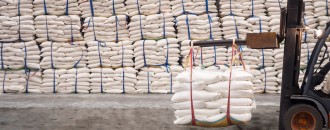
Government to allot 62 offshore mineral blocks for mining
Source: PTI
The government is in the process of framing regulations for exploration and mining in offshore blocks, which contain minerals such as zirconium, titanium, thorium, tungsten and rare earth elements. Mines Ministry has set up a committee that is framing the rules under the Offshore Development and Regulation Act, a top ministry official has said. “I have constituted a committee under Economic Advisor to frame rules under Offshore Development and Regulation Act. When the rules are framed, we will go for allotment of blocks for offshore prospecting, exploration as well as for mining,” Mines Secretary Balvinder Kumar told PTI. The Geological Survey of India (GSI) carries out surveys in the Exclusive Economic Zone (EEZ) and Territorial Waters (TW) of India to assess the offshore mineral resources. TW is the belt of coastal water that extends up to 12 nautical miles (around 22 km) from the coast of a country. EEZ is a sea zone on which a country has special rights regarding exploration as well as the use of marine resources, including energy production from water and wind. “In 2012, we had allotted 62 offshore blocks for prospective exploration as well as for mining. Then after the allotment, many people went to court. As on date, though there is no stay order, we are reviewing the whole process,” Kumar said. As per government data, a total of 62 blocks of 5 minutes by 5 minutes size have been identified in the offshore areas of Andhra Pradesh, Odisha, Maharashtra, Kerala and Tamil Nadu. Heavy mineral sand is an important source of zirconium, titanium, thorium, tungsten, rare earth elements as well as industrial minerals such as diamond, sapphire and garnet. Besides, GSI has identified silica sand within the TW off the Kerala coast and Lime mud within the EEZ off the Gujarat and Andhra Pradesh coast. Phosphatic sediments within the EEZ off Gujarat, Maharashtra, Tamil Nadu and Puducherry coast have also been identified. That apart, Calcareous sand within the EEZ and TW off the Lakshadweep coast and Manganese encrustations/ micro nodules within the EEZ off the Lakshadweep coast have also been identified by GSI. In the EEZ, GSI has carried out 3,95,590 line km of bathymetric, 4,16,992 sq km of multibeam bathymetric and 2,24,010 line km of magnetic surveys. Bathymetry involves measurement of ocean depth through depth sounding. GSI has also done 28,911 line km of gravity survey and 26,050 line km of sub bottom profiling in the EEZ, he added. In the TW, GSI has carried out about 68,572 line km bathymetric, 2,867 sq km of multibeam bathymetric and 26,757 line km of magnetic surveys. It has also done 49,057 line km of shallow seismic survey and 7,249 line km of sub bottom profiling in the TW, the Minister said.
August 31, 2015 | 5:10pm IST.






 to success.
to success.